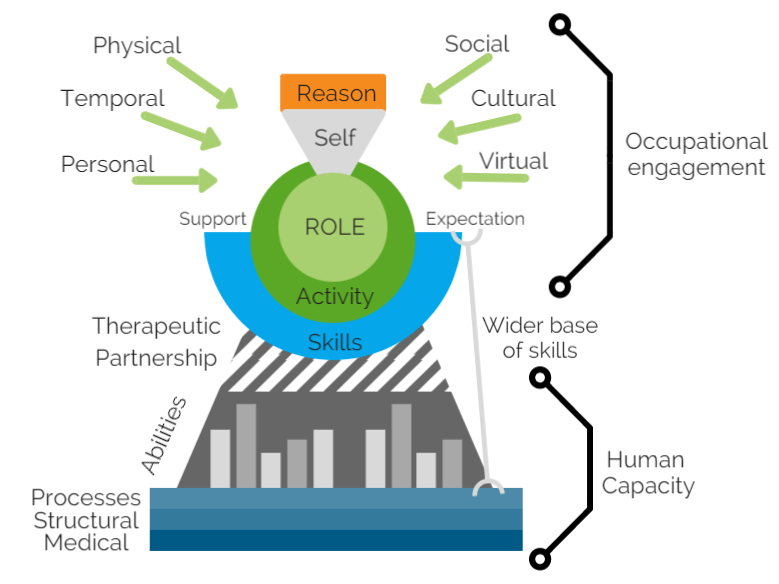Early Links work under a newly defined REBOOT Framework for clinical reasoning and interdisciplinary practice. The aim of this framework is to provide a process for health professional to communicate their knowledge with clients and other key personnel, outside of a health profession. By presenting the models of practice and academic influences that the Early Links Team use to guide their decision making, we aim to increase your understanding of how Occupational Therapy can make daily life easier.
There's no doubt; we all have a different story and different experiences to share which influence the challenges we have, but this framework and additional models for practice allow our Occupational Therapists to find the gaps in learning, development, abilities and supports which can be improved to achieve more meaningful participation in activities you enjoy or need to do.
Domains of Ability
Sensory
Motor Patterns
Self-Awareness
Self-Regulation
Emotional Regulation
Cognition
Motor Planning
Social
Community Awareness
Executive Function
REBOOT PATHWAY
The REBOOT Framework has a training package which Occupational Therapists complete to strengthen their clinical reasoning and artful use of intervention techniques.
The REBOOT Framework can provide a snapshot of any situation, while also supporting discussion about therapeutic planning and goals setting.
More information about the academic content is due for release in late-January, including outlines for how various models and frames of reference have influenced the development of the REBOOT framework.



